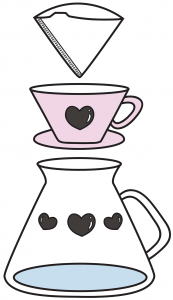Dose

‘Why This Recipe?’
In this chapter we discuss how to accurately reproduce a percolation recipe. The recipe in a cafe is optimised to produce the best balance of flavour. When foods or drinks are balanced, they aren’t too sour or too bitter. No bad tastes stand out, and the interaction of tastes is harmonious. It also means the foods or drinks don’t dry your mouth or impart undesirable textural sensations. Recipe designers for a cafe taste-test until they find a formula that is balanced in flavour. The recipe designer might be a head barista in a cafe, or it might even be the person who roasted the coffee. If baristas can preserve the integrity of a recipe, their brews will be balanced.
The amount of coffee in a recipe determines the strength of a brew as well as how much the drink costs to make. These two issues are critical to the success of a cafe, so let’s discuss them separately.
Dosing and Strength
The specialty coffee movement across the globe has evolved such that almost all percolation brew methods occupy the weakest tier of strength among coffee beverages. Brews in this range are most often stronger than 1% strength and usually weaker than 2%. (A 1% strength beverage contains 99% water and 1% dissolved solids.) To achieve this kind of strength with 1 litre of water, the lowest dose of coffee you would need would be around 50 grams, and the highest would be around 70 grams. The quantity of coffee is around 15 times less than the dose of water. For that reason we must be 15 times more precise with our dosing of coffee than we are with our brew water.
Filter cones and filter papers come in many different sizes and shapes, but there is a standardised system of size groupings. It isn’t much different from the way a cook may measure out a quantity by volume, using a standardised half-cup or quarter-cup. In hand-brewing, a filter cone is usually labelled ‘01’,